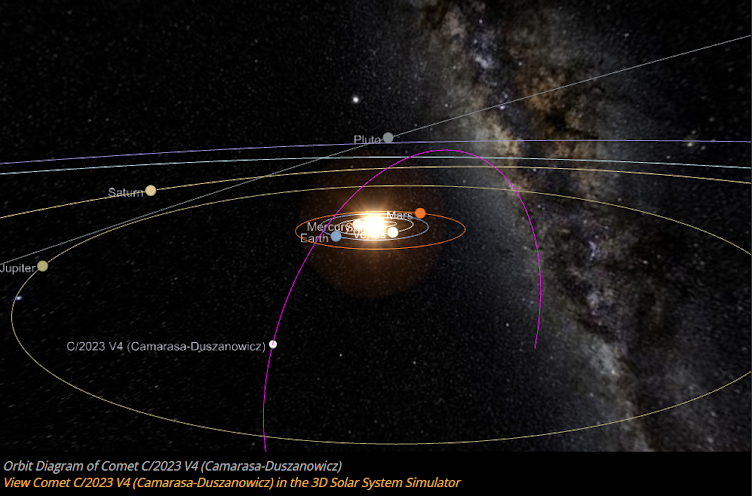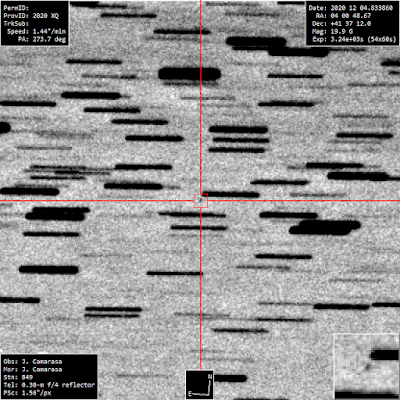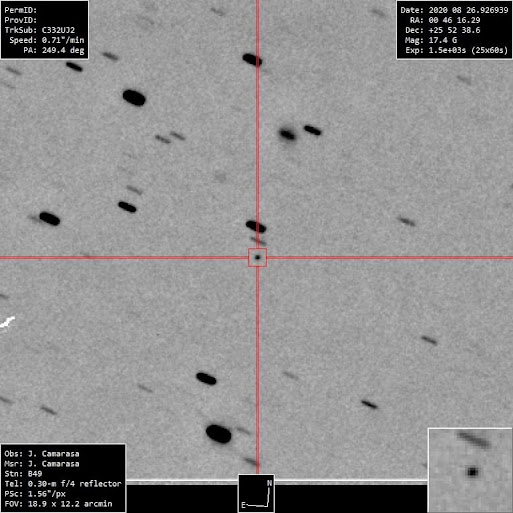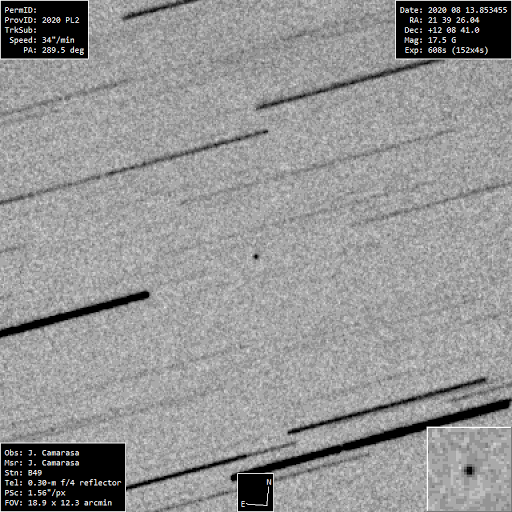https://www.minorplanetcenter.net/mpec/K20/K20X71.html
Paginas
Buscar este blog
miércoles, 9 de diciembre de 2020
martes, 8 de diciembre de 2020
domingo, 6 de diciembre de 2020
sábado, 5 de diciembre de 2020
viernes, 4 de diciembre de 2020
domingo, 29 de noviembre de 2020
lunes, 23 de noviembre de 2020
sábado, 14 de noviembre de 2020
jueves, 12 de noviembre de 2020
viernes, 30 de octubre de 2020
martes, 27 de octubre de 2020
domingo, 25 de octubre de 2020
lunes, 19 de octubre de 2020
domingo, 18 de octubre de 2020
2020 UE Type Apollo
https://www.minorplanetcenter.net/mpec/K20/K20U59.html
by Catalina Sky Survey.
viernes, 16 de octubre de 2020
martes, 6 de octubre de 2020
martes, 29 de septiembre de 2020
miércoles, 23 de septiembre de 2020
domingo, 20 de septiembre de 2020
sábado, 19 de septiembre de 2020
lunes, 7 de septiembre de 2020
domingo, 6 de septiembre de 2020
sábado, 5 de septiembre de 2020
viernes, 4 de septiembre de 2020
sábado, 29 de agosto de 2020
viernes, 28 de agosto de 2020
Mars mision (Hope).
Emirates Mars Mission ("Hope") seen from record-breaking distance
On August 26th, the Catalina Sky Survey found an object that apparently had come very close to Earth around July 20th. Provisionally designated C332UJ2, it was initially believed to be a fairly large asteroid, possibly 150 metres in diameter. If true, this should have been an impossibly close encounter to miss.
Upon further inspection, it turned out that the object's position and orbit matched that of the Hope spacecraft, which is currently on its way to Mars following a launch on July 19th.
At a distance of 0.078 AU (11.7 million km), the spacecraft was not expected to be observable even with the largest telescopes. The unusual surge in brightness was likely due to reflections from the spacecraft's solar panels ("solar panel glints"). This is possible if the orientation of the spacecraft is just right.
No man-made object has ever been seen from anywhere near that distance. Hope, a.k.a. C332UJ2, is now the farthest man-made object ever observed!
By Daniel Bamberger.


















































